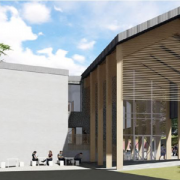Children, teachers, schools & your community deserve greater protection from fire… BAFSA is calling for Government to require the installation of automatic fire sprinklers in all new built and substantially refurbished schools in England and Northern Ireland?
Burnt out schools and classrooms cause major disruption to children’s education, with repairs leading to months or even years of upheaval and the DoE recognises that every school day missed is associated with a lower attainment outcome. School buildings also play host to community clubs and groups thus school fires have a devastating impact on entire communities which those schools serve, students, teachers, and families along with the environment.
We invite you to take one minute to view our animation Sprinklers in Schools (England) – bafsa
The Building Regulations do not require the installation of fire sprinkler suppression systems in school buildings for life safety but the case for sprinklers is compelling… Of almost 1,000 fires over five years in buildings where sprinklers were fitted, research conducted by the National Fire Chiefs’ Council (NFCC) found they controlled or extinguished blazes in 99% of cases”.
Automatic fire sprinklers save the lives of both Firefighters and the public; they also protect the valuable building stock of the country. Sprinklers in schools will control, or extinguish, a fire at source thus :
- Allow our children to have an uninterrupted education
- Reduce fire damage and hugely reduced repair costs, thus saving tax-payers money
- Protect essential resources and irreplaceable course work materials from total loss
- Minimise the significant emotional, social and educational detriment to children
- Avoid physical disruption and negative impact on well-being for students and communities
BAFSA is calling on the Government to require the installation of automatic fire sprinklers in all new built and substantially refurbished schools in England and Northern Ireland and we are not a lone voice, leading bodies in the built environment have signed a joint statement to this effect. In their joint statement RIBA, CIOB, RICS, NFCC said “Achieving a more consistent approach to life safety and sprinkler installations in schools that draws on best practice from all the UK nations would provide clarity to the industry and help better protect the public and communities”. We hope you will add your voice to this vital campaign.
BAFSA is running a free-to-attend webinar hosted by BAFSA, on Wednesday 10th February 1000hrs “ Why we need automatic fire sprinklers in schools “ REGISTER IN ADVANCE FOR THIS WEBINAR











